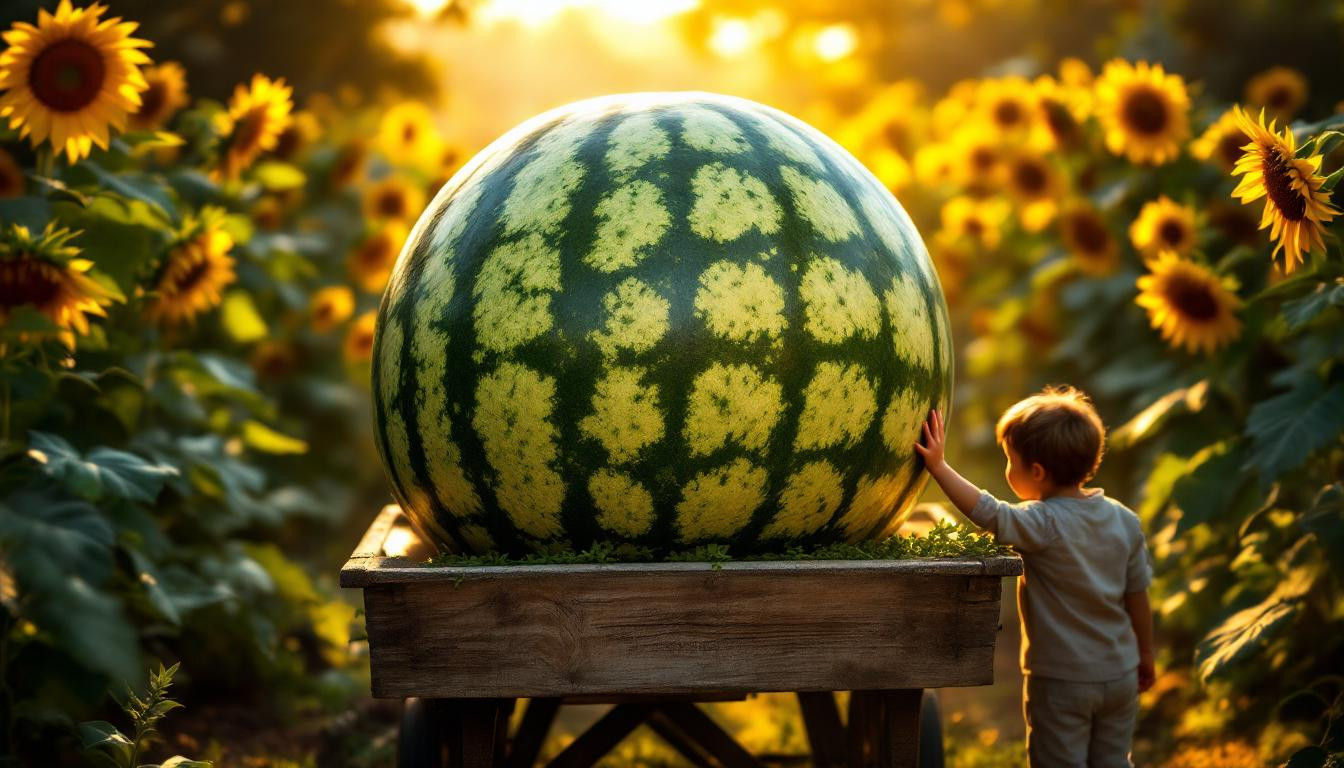Growing watermelons can transform your backyard into a magical playground that captivates your children’s imagination. There’s something undeniably special about watching tiny seeds grow into sprawling vines that produce enormous, juicy fruits. Let’s explore how to create a watermelon patch that will not only yield delicious summer treats but also become your kids’ favorite outdoor classroom.
Why watermelons are perfect for kid-friendly gardening
Watermelons offer the perfect combination of rapid growth and impressive results that keep children engaged throughout the growing season. Unlike some garden projects that require months of patience before seeing results, watermelon vines grow visibly day by day, creating an exciting journey from seed to harvest that maintains kids’ interest.
“Children develop a deeper connection to their food when they participate in growing it,” says Maria Johnson, a family garden educator. “Watermelons create particularly magical moments because of their dramatic transformation from tiny seed to enormous fruit.”
Picking the perfect spot for your watermelon patch
Watermelons are sun-worshippers that need plenty of space to spread their vines. Select a location that receives at least 8 hours of direct sunlight daily and allows for 6-8 feet of growth in all directions. The soil should be well-draining and fertile—think of it as creating a comfortable home where your watermelons can thrive.
For best results, consider implementing some organic gardening techniques that keep your family patch chemical-free and healthy.
Setting up a kid-friendly planting station
Transform planting day into a special event by creating a dedicated planting station with:
- Child-sized garden tools with colorful handles
- Plant markers made from popsicle sticks
- Small watering cans for daily care routines
- A garden journal for tracking growth
The perfect planting technique for maximum success
After the soil temperature reaches at least 70°F (typically 2-3 weeks after the last frost), create small hills about 3 feet apart. This raised planting method improves drainage and allows soil to warm quickly—watermelons are like tropical vacationers who hate cold feet!
Plant 4-5 seeds per hill, about an inch deep. Once seedlings develop their second set of true leaves, thin to the strongest 2-3 plants per hill. This selective approach ensures your watermelons have room to flourish without competing for nutrients.
“The secret to successful watermelon growing is giving those vines plenty of room to run,” explains Thomas Rivera, community garden coordinator. “Think of watermelon vines as explorers that need space for their adventure.”
Creative watering solutions that kids can manage
Consistent moisture is crucial for developing sweet, juicy watermelons. Consider installing sustainable garden irrigation like soaker hoses that deliver water directly to the soil. This creates a perfect opportunity to teach children about water conservation while making watering manageable for small helpers.
Companion planting to protect your watermelon patch
Create a protective garden community by planting citronella to keep mosquitoes away while you and your children tend to your watermelon patch. Other beneficial companions include:
- Nasturtiums to repel cucumber beetles
- Marigolds to deter nematodes
- Sunflowers to provide partial shade and attract pollinators
Making the wait fun with growth-tracking activities
The 80-100 day growing period offers numerous opportunities for engagement. Create a growth-tracking chart where kids measure vine length weekly. Photograph developing watermelons beside familiar objects to visualize their incredible growth—from marble-sized to basketball-sized in just weeks!
For additional inspiration on creating family-friendly garden ideas, consider how your watermelon patch can become part of a larger outdoor play space.
The magical moment: harvesting your first watermelon
Teaching children to identify ripeness becomes an exciting treasure hunt. Look for the curly tendril nearest the stem to brown and dry out, listen for the hollow sound when tapped, and check that the bottom spot has changed from white to creamy yellow. These ripeness indicators transform your kids into watermelon detectives!
For more detailed watermelon gardening tips, explore seasonal planting schedules that optimize your growing season.
The joy of slicing into that first homegrown watermelon creates memories that last far longer than summer itself. Your watermelon patch becomes more than just a garden—it transforms into a place where curiosity, responsibility, and sweet rewards come together in perfect harmony.
